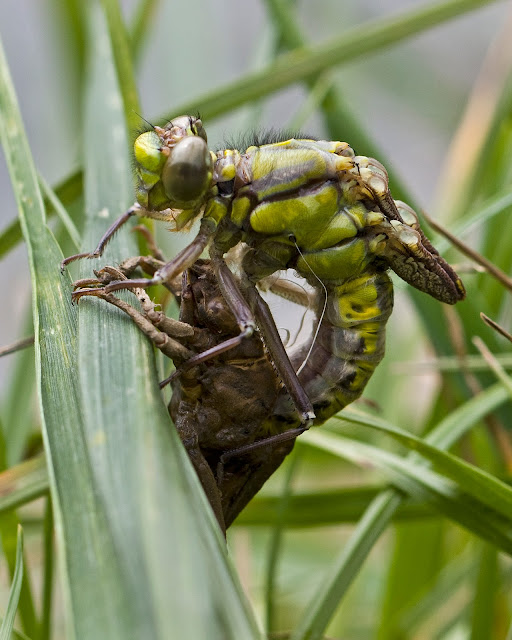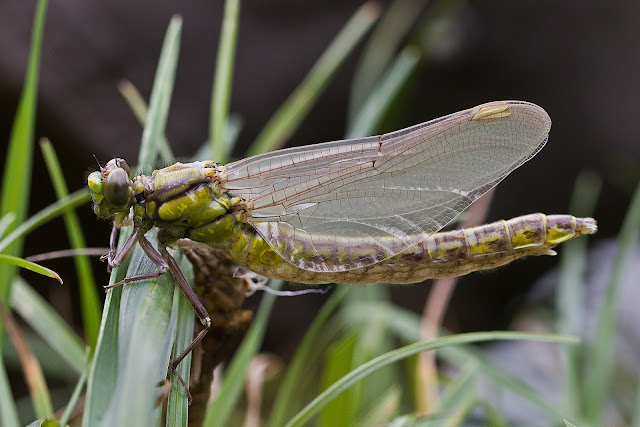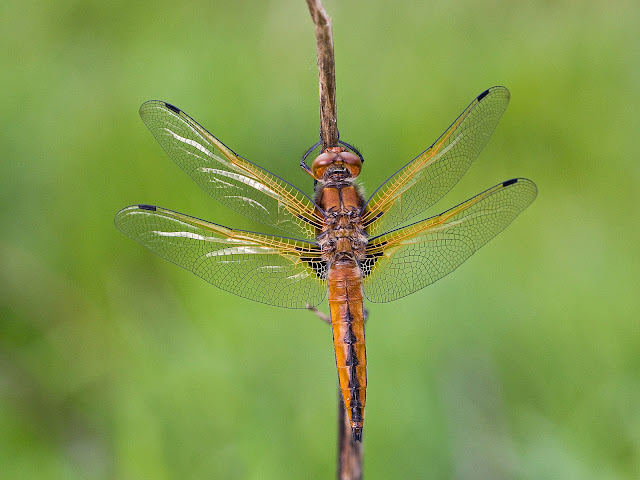In the afternoon we moved on to Inner Farne. Similar birds but also the chance of seeing Arctic, Sandwich and Common Terns. The Arctic Terns were the reason for visiting here. Again I had seen them before but never this close. A feisty bird, they nest next to and on the paths and you come under constant attack from birds warning you to keep away from their nests. Wear a thick hat if you go there.
There must be a balance for the Arctic Terns. Nest close to where the people go as it protects against the predator gulls but keep the people away from the nests to protect the eggs. It was interesting that some of the birds took no part in the mobbing of the visitors, choosing to sit calmly on the nests as the people walked past just a few feet away. I wonder if these are older birds who know that they are safe and are happy to let the more excitable youngsters get on with the harassment.
It is difficult to believe that these tiny eggs will hatch in a few weeks and by the end of the year the young birds will be down in the South Atlantic part way through an annual 56,000 mile migration.
The Sandwich and Common Terns were a bit harder to find than the Arctic. The Sandwich Terns were nesting in a tight colony in the centre of the island.
Although their name suggests they should be easy to find, the Common Terns were in short supply on the island with just a few lone individuals found nesting.
The islands still show a brutal side. Gulls wait to attack and steal food from returning Puffins. They also predate nests stealing eggs and chicks. It looks harsh but they have to live and they also have chicks to feed.
 |
| Lesser Black-backed Gull |
It is not a cheap trip, £35 for the all day birding trip and £26 to the National Trust for landing rights. Expensive but well worth it. The National Trust also has to get the balance right. Allowing people onto the islands inevitably means some disturbance and abandoned nests. However, the money they make goes to providing wardens and to protecting the birds. Keeping the cost high will deter some visitors but I have to say, not me. I will be going back at the first opportunity that I get.
Have the National Trust got the balance right? The boats were very crowded, I would say overcrowded, and there were lots of people on the islands. Most were not birders and many seemed to be surprised by the Arctic Terns attacking them. A well aimed brolly, handbag, or flailing arm could do a lot of damage to these small birds. I also wonder if all the money is being used for the benefit of the birds. I could not find any details of visitor numbers or income but they could easily be taking £5-10K a day. I hope it is all being spent on the birds.






















































